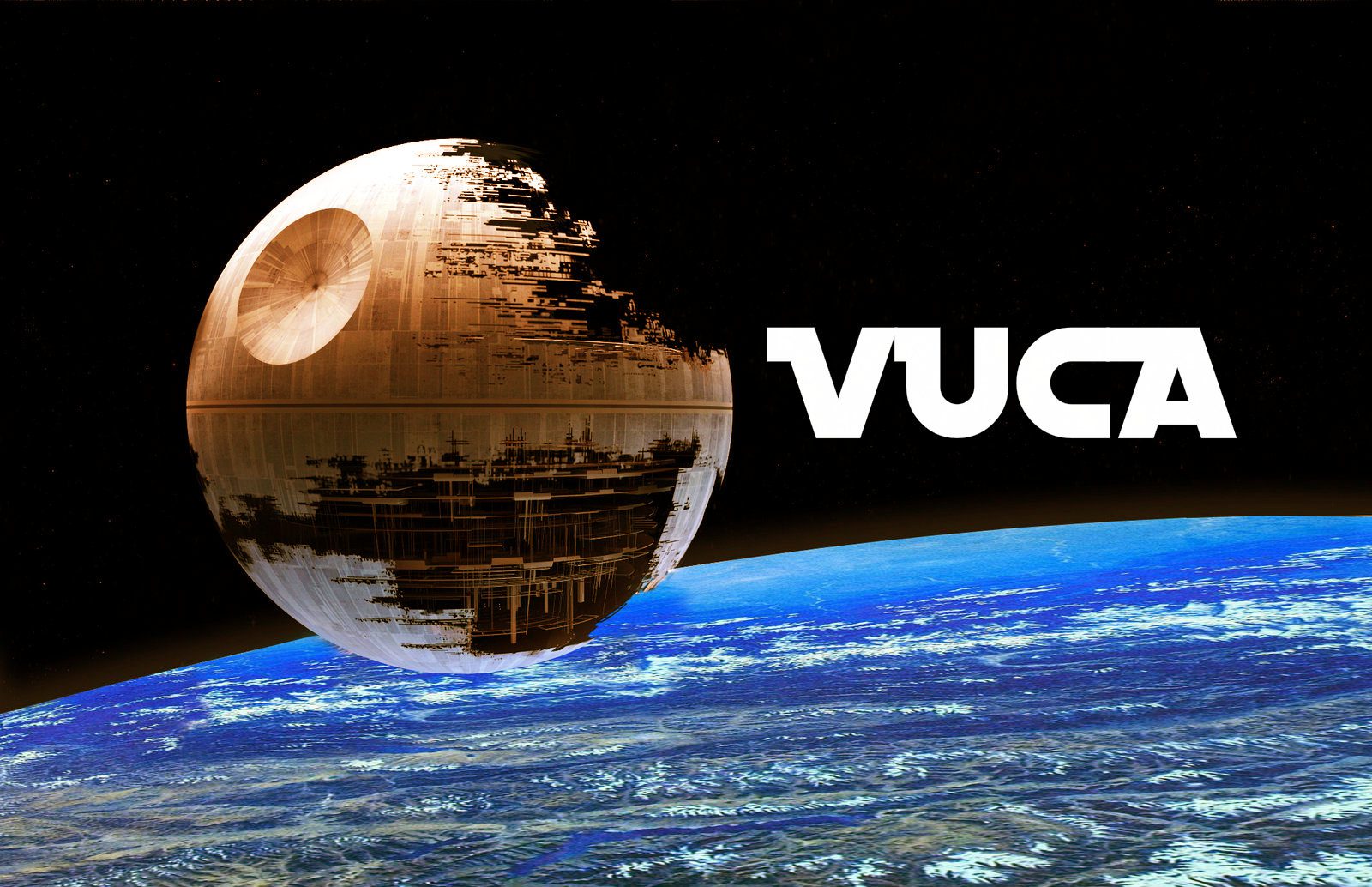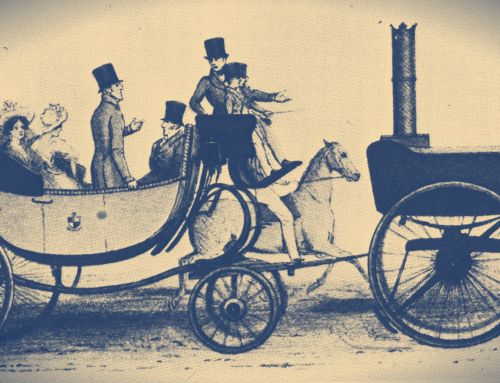I apologize to the consulting friends who work with strategic planning, but we are nearing the end of an era. Each day that passes, the world becomes more VUCA (Volatile, Uncertain, Complex and Ambiguous) and this impacts directly the way that we think and act strategically.
Good old strategic planning has little use in the VUCA world.
I’m not exaggerating, and I want to show you why.
Warning: This text can generate discomfort and anxiety.
To find out if you act in a VUCA context, answer these questions:
- Could the business model or product/service of your organization be strongly affected by… change in exchange rates? Interest Rate Jumps? Political decisions? Changes in laws and regulations? Exponential adoption of new technologies? Prices established by the market? Judicial decisions? Viral videos in social media? Climate events? Environmental disasters?
- Do you have great difficulty in predicting or being sure… if your business model is feasible? What will your income be in the next 12 months? Who will be your biggest competitor next semester? What is the probability that a technology will emerge in the coming months leaving your value proposition or work obsolete? How will the business environment for your organization be in the next public administration? What are the risks of investing heavily in an innovative project? If you and your team will adapt to the constant flow of change?
- Do you act in a context or system where… events arise without being possible to establish beforehand a simple relation of cause and effect? Are there multiple actors or stakeholders in constant interaction and adaptation? Do you see a growing level of interdependence between companies, governments, countries and institutions? Small actions can have their impact amplified thousands of times (non-linear relationship or butterfly effect)?
- You don’t have clarity about: the impact of major changes in society that are coming or have already come? Should you treat the other company as a competitor or partner? What are the requirements or attributes valued by the customer? The real meaning of words like innovation, success and happiness these days? How to handle this text and our provocations?
If you answered YES to the above questions, you are in a VUCA world. Whether you want it or not.
How VUCA makes strategic planning obsolete
The standard sequence in creating a strategic plan is:
- Definition of mission, vision and values
- Competition and SWOT analysis (or variations on the topic)
- Strategy definition
- Deployment of strategy in projects, actions and goals
- Monthly follow-up of the plan and corrective actions
Now let’s look at how a VUCA context affects each of these processes.
Definition of mission, vision and values
This beloved triad seems to make sense for the beginning of a strategic planning process. But it doesn’t. You really need something solid to serve as an anchor, but don’t do this exercise thinking you will find solidity and clarity.
Most definitions of mission, vision, and values are filled with ambiguous words or buzzwords. The VUCA world laughs at these efforts. In addition, declaring values by itself doesn’t have any impact on the culture of the organization. Or do you believe that big companies involved in scandals forgot to put the word ethics on the list?
The most powerful attributes of a culture emerge from day-to-day actions and stories, not from a statement. This happens because the modern organization is by itself a complex system. Declaring values and putting them on the wall is the first step to ignoring this phenomenon.
Competition and SWOT analysis
We need to understand the current scenario. Fact.
Do you really believe that tools that use simple 2×2 tables like the BCG matrix account for the complexity and ambiguity of their context? In SWOT have you realized that almost all elements that are weaknesses and threats can also be seen as opportunities? Have you ever thought that for example the great strength of Blockbuster was its large and wide network of stores and the great physical catalog? All of this quickly lost its meaning in the era of streaming. RIP Blockbuster.
Commonly used analysis tools take pictures of a complex scenario. Photos with ridiculously low resolution that fail to tell the story of a dynamic and uncertain process. The conversations that arise during the use of these tools may be interesting, but they are weak in creating meaning (sensemaking) in a VUCA world.
Strategy Definition
Let’s say you’re happy with the previous step. It’s time for you to think of a macro direction. A statement that will set out a strategy for the next 3 or 5 years. Is it worth ignoring uncertainty and volatility just to have a false reassurance? Every strategic definition seeks to predict the future and determine what must be done to achieve an objective.
Imagine a chess player who tries to predict his opponent’s moves and think of his moves in order to achieve his goals. But there is a problem. Chess is not VUCA because the rules are clear and all players obey, the field is visible and the movements are alternated and cadenced.
If we take the VUCA world seriously we will realize that the strategy that led to success is only a pattern in the flow of past events. It is easy to connect the dots after the event, but impossible to predict and set in advance.
Deployment of strategy in projects, actions and goals
The time has come to plan the construction of the “Death Star”. After all, it’s clear that this is the best way to dominate the galaxy. Then nothing more natural than schedules, plans, goals, budgets, SMART goals, deadlines, Gantt charts, etc. And how is all this in front of a VUCA world?
All of these tools and artifacts were created in a more predictable and controllable world. Its use in organizations that operate under VUCA conditions basically occurs in three ways:
- Grand theater. Everyone uses the tools without shame or embarrassment. They manipulate numbers, masquerade results, stipulate goals and objectives that are easy to achieve or vague enough to fit everything in. They spend resources only so they are available on the next budget. Deadlines are stipulated with a considerable buffer and things are accomplished in the last hour. Everything becomes staging.
- Hell on earth. The rules of the game are taken aback and threats are explicit. Whoever doesn’t follow the plan will suffer the consequences. Unmet goal is subject to dismissal. A simple recipe to demotivate the team and destroy your organization.
- Apples and oranges. The tools are adapted to the point of becoming almost unrecognizable, but people still stubbornly call it by their old names. Or they are poorly adapted, but the name changes, creating more confusion. Examples: using OKRs as targets and tying incentives to them. Or treating estimates as if they were deadlines, but still calling estimates. I’ve even seen people naming an action plan Kanban! At the end, when things don’t go as planned, people don’t realize that the mess was created by the (dis)organization itself.
We need to think about what tools and artifacts we use, because each one works best in one context. And the best-known tools were not created for a VUCA world. That simple.
Monthly follow-up of the plan and corrective actions
Having regular meetings to deal with strategy doesn’t seem like a bad idea. But spending time in these meetings looking, discussing, and adapting fanciful and ultra-detailed plans which have little applicability in the present context doesn’t.
In a VUCA world, if you got here using the previous steps it’s very likely that corrective actions won’t be enough. This happens because:
- You aren’t taking care of culture on a recurring basis that consider its complexity.
- There’s no clarity about purpose in the organization or something that anchor and serve as the north to people.
- You and the rest of the organization don’t exercise the construction of sense and perception of a complex situation that evolves rapidly.
- You still believe that a predictive and prescriptive strategy is the only possible strategy. Responsiveness is not part of the vocabulary.
- You use tools that are based on predicting, commanding, and controlling.
Conclusion: The VUCA world has arrived and everyone is playing violin on Titanic’s deck.
The end of the strategic planning era isn’t likely to surprise you. But how do we act strategically in a VUCA world? Is it possible?
In the next post we will share some practices that are emerging in the field of organizational strategy that are compatible with the VUCA world.






[…] Stop right there! Have you noticed that you are doing the same thing, yet expecting different results? Your startup deserves a more innovative organizational structure, with a better adaptation capacity. I’m talking about a more agile alternative that can navigate in the VUCA world. […]
[…] If you’re hoping to read about consolidated (or outdated) Organizational Strategy practices, start by reading this text about the end of the era of Strategic Planning. […]
[…] other social technologies are being created to deal with today’s world, which is undoubtedly VUCA (volatile, uncertain, complex and […]
[…] The problem is that in a year, maybe this product won’t be valuable anymore. The market has changed. The socio-political scenario as well. New laws have made the product unfeasible. After all, the world is VUCA. […]
[…] Suddenly the established division doesn’t seem fair anymore and it’s necessary to have that difficult and painful conversation with the other investors and founders. However, talking about it shouldn’t be so uncomfortable. It turns out that we are stuck in the old paradigm of “predict and control”, where we truly believe that it’s possible to divide equity before the business unfolds. This is as unreal as a 5-year strategic plan. […]
[…] Download Plan More @ targetteal.com […]
A lot of info that is already known, but nothing special to move forward. Over diagnosis in this text
[…] the VUCA reality demands that organizations be responsive and adapt quickly however, there are two phenomena […]